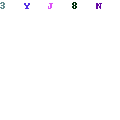Post by account_disabled on Feb 19, 2024 5:59:35 GMT
Pagination, also known as a pager, refers to "page turning". Previously, implementation using rel=next/prev was known as best practice, but it was discovered that Google was not referring to the rel=next/prev element, leaving many of his SEO professionals confused. It was done. Additionally, with the spread of smartphones, web design has changed, and design has become more important than SEO. There are various opinions regarding pagination. There are various ways of thinking, such as having Google recognize everything or deliberately not indexing it, but we had a discussion about our company's best practices and Mr. Muroya's opinions, and we received many questions from the viewers, making it a very lively event.
First, let's review pagination. Of course it's a smartphone. Taking telephone number list smartphones as an example, there are three main implementation patterns . Recently, the number 2 "Load More" (see more) and the number 3 infinite scroll have increased significantly. This is probably because it is so easy to use on a smartphone. (There seems to be some debate among designers as to whether it is really easy to use, as it often takes you back to the top of the page when you go back to the list from details...) However, the second and third implementations are not recommended from an SEO perspective. Google's crawler doesn't click Load More, and it doesn't scroll. In other words, even if there are 100 pages, only the first page will be crawled.

The first conventional pagination is best, but 2 and 3 can also be used, so here is the next sheet. In the first place, in order for Google to crawl properly, it needs a “unique URL” and a “crawlable link.” The URL can be in any format, including parameters such as ?p=2. Only # (hash) is not indexed, so it is NG. Other NGs that can be seen are cases where canonical is added to the first page from the second page onwards. I really, really see this too. Out of 10 sites I looked at, 5 had this canonical in them... If the first page is canonical, the second and subsequent pages will not be indexed, and the products listed on the second and subsequent pages will not be crawled or recognized, and backlink evaluations will not be passed, so there is no benefit from an SEO perspective.
First, let's review pagination. Of course it's a smartphone. Taking telephone number list smartphones as an example, there are three main implementation patterns . Recently, the number 2 "Load More" (see more) and the number 3 infinite scroll have increased significantly. This is probably because it is so easy to use on a smartphone. (There seems to be some debate among designers as to whether it is really easy to use, as it often takes you back to the top of the page when you go back to the list from details...) However, the second and third implementations are not recommended from an SEO perspective. Google's crawler doesn't click Load More, and it doesn't scroll. In other words, even if there are 100 pages, only the first page will be crawled.

The first conventional pagination is best, but 2 and 3 can also be used, so here is the next sheet. In the first place, in order for Google to crawl properly, it needs a “unique URL” and a “crawlable link.” The URL can be in any format, including parameters such as ?p=2. Only # (hash) is not indexed, so it is NG. Other NGs that can be seen are cases where canonical is added to the first page from the second page onwards. I really, really see this too. Out of 10 sites I looked at, 5 had this canonical in them... If the first page is canonical, the second and subsequent pages will not be indexed, and the products listed on the second and subsequent pages will not be crawled or recognized, and backlink evaluations will not be passed, so there is no benefit from an SEO perspective.

